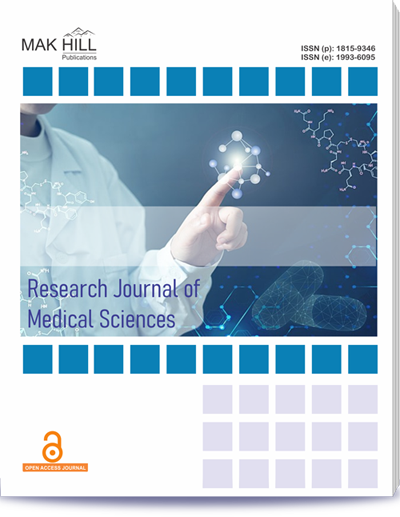
Research Journal of Medical Sciences
ISSN: Online 1993-6095ISSN: Print 1815-9346
Abstract
Ventilator‐associated pneumonia (VAP) is pneumonia in mechanically ventilated patients that develops later than or at 48 hrs after the patient has been placed on mechanical ventilation. The aim of this study is to compare the incidence, risk factors and outcomes of Ventilator Associated Pneumonia (VAP) and non‐VAP conditions in neonates. Prospective Observational hospital based time bound study. All neonates (inborn and out born) admitted in NICU at GMERS Medical College and General hospital, Gotri, Vadodara. It’s conducted from October 2020 to April 2021. Total 70 patients are included in this study. About 22.86% of the patients in the study developed VAP. There was a statistically significant association for development of VAP in patients with low birth weight, prematurity (GA<32 weeks) and number of re intubations. Comparision of both groups for primary disease distribution, use of medications, invasive procedures and feeding pattern did not show any statistical difference. No statistically significant difference was noted as regards mortality and duration of NICU stay. However patients with VAP had longer duration of ventilation. Patients on ventilators should routinely have their endotracheal aspirates tested for culture sensitivity and if VAP develops, the patient should receive a different course of antibiotics. We may be able to increase the success rate for patients on mechanical ventilation by utilizing aseptic precautions while handling ventilated patients and empirical antibiotics in accordance with our NICU's endotracheal aspirate sensitivity pattern in the case of patients who develop nosocomial pneumonia. In order to create interventions to stop neonatal VAP, more research is required.
How to cite this article:
Mausam K. Jayswal, Ritesh N. Parmar and Nimisha Pandya. Study of Ventilator Associated Pneumonia in Neonates: Risk Factors and Outcomes.
DOI: https://doi.org/10.36478/10.59218/makrjms.2023.8.135.138
URL: https://www.makhillpublications.co/view-article/1815-9346/10.59218/makrjms.2023.8.135.138